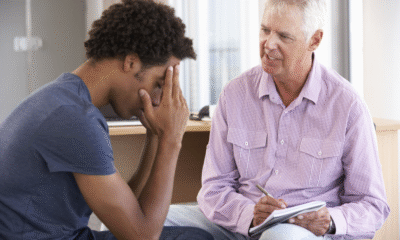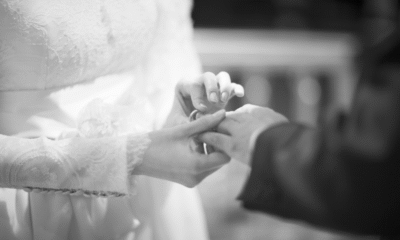Sometimes, change begins with one person who’s had enough of silence, stress, and emotional distance. She had asked for help, waited for her partner to meet her halfway, and hoped things would turn around. But nothing changed until she decided to take the first step by herself. She Walked Into Marriage Counseling Alone.
What happened next surprised her partner and shifted the direction of their relationship in ways neither of them expected. This story isn’t just about one couple it’s about how personal growth, even when done alone, can spark powerful change in a relationship. Here’s how it unfolded, and why it matters.
She Took the First Step Alone
She had asked her partner to try counselling. He refused. He didn’t think their problems were that bad. But she felt stuck, unheard, and emotionally exhausted. Instead of waiting for things to get worse, she made an appointment on her own. Walking into therapy without him was scary.

She didn’t know if it would help or make things worse. But doing nothing wasn’t an option anymore. That first step gave her a sense of control and calm she hadn’t felt in a long time. She realised something important: she could change her life, even if he wouldn’t change his.
- Brief background: Their relationship had been cold, tense, or distant for months.
- She suggested therapy; her partner refused.
- She decided to go alone.
Use this section to hook the reader and create empathy. Keep it short, emotional, and relatable.
Read: Not All Couples Therapy Is Equal: What We Learned Searching Locally
What Happens When Only One Person Goes to Counselling?
Going to counselling alone may seem one-sided, but it can lead to major change. A therapist helps you understand your emotions, habits, and how you show up in the relationship. You begin to recognise your own role in the conflicts. You learn how to respond rather than react.
You also gain tools to manage stress, express yourself clearly, and set healthy boundaries. Therapy helps you stop blaming and start healing. Even if your partner never joins, you can still shift the emotional tone at home. When one person grows, the whole relationship starts to feel different sometimes even better.
- Going alone still works: therapy isn’t just for couples together.
- A trained therapist helps her understand her triggers, reactions, and emotional needs.
- She learns what’s in her control and what’s not.
- She stops waiting for her partner to change.
The Unexpected Changes That Followed
She didn’t expect anything big. But after a few sessions, she stopped arguing the same way. Her tone changed. Her body language softened. She started asking for what she needed without guilt or blame. Instead of reacting in frustration, she paused and chose her words. Her partner noticed.
Without trying to fix him, she focused on fixing herself. That made the home feel safer, calmer. Tension dropped. Conversations became less explosive. Even small changes in her behaviour shifted the atmosphere between them. And when conflict came up, it didn’t spiral. She had changed, and now he was starting to notice.
- She starts setting better boundaries.
- She communicates differently calmer, clearer, and without blame.
- Her emotional reactions reduce; tension at home decreases.
- Her partner notices: Something’s different.
The focus here is to show real, measurable changes that readers can relate to and feel inspired by. This builds hope and keeps them reading.
Her Growth Pushed the Relationship Forward
The more she worked on herself, the more confident she became. She no longer begged for his attention or approval. She created a healthy space and didn’t chase after peace. This confused her partner at first but then it intrigued him. He saw her becoming stronger, happier, and more grounded. He didn’t feel attacked or blamed anymore.

One day, he asked about her therapist. A week later, he said he wanted to come along. Not out of pressure, but out of genuine interest. What began as her solo journey became something they could do together. The shift started with her strength.
- As her self-awareness increases, the emotional climate of the relationship improves.
- Her partner becomes curious, less defensive.
- Eventually, he asks to come with her on his own.
- Therapy becomes a team effort, but it starts with one person doing the work.
This part encourages readers by showing results without overpromising. The tone remains practical and emotionally intelligent.
Read: This One Unexpected Shift in Therapy Helped Me Feel Human Again
What You Can Do If Your Partner Won’t Go to Therapy
You don’t need both people to start improving your relationship. Go alone. Choose a therapist who understands relationships and personal growth. Work on your triggers, emotional patterns, and communication style. Learn how to express yourself clearly without attacking. Stop expecting your partner to change first.
Instead, focus on what’s in your control. Set boundaries. Stay calm. Build confidence. Therapy helps you show up differently, which naturally shifts the dynamic. Don’t make therapy a threat. Let it be a tool. Change can happen even if it’s just you at first. Taking care of your emotional health is never a wasted effort.
- Go alone. It’s not a waste. Change starts with one person.
- Focus on yourself: healing, boundaries, communication.
- Choose a therapist with experience in relationship dynamics and individual growth.
- Don’t use therapy as a weapon; use it as a mirror.
Offer actionable, no-fluff steps. Encourage immediate action without guilt.
When It Works, and When It Doesn’t
Sometimes, solo therapy leads to healing in the relationship. Other times, it reveals that staying isn’t healthy. Both outcomes are wins. You get stronger, clearer, and more aware. If your partner starts to change too, the relationship can grow stronger. If they don’t, you’ll know you did the work and gave it your best.

You’ll make decisions from a place of clarity, not confusion. Therapy isn’t magic, but it’s powerful. It helps you move from pain to peace no matter what your partner does. In the end, the goal is not just to save the relationship, but to save yourself.
- Not every relationship will survive but you’ll grow either way.
- Sometimes, clarity leads to healing. Sometimes, it leads to letting go.
- In both cases, going alone gives you strength and peace.
Read: Why Thousands Are Choosing Counselling Before They Feel Broken
She felt stuck in a distant, struggling relationship, so she made a bold choice: she walked into marriage counselling alone. Without her partner, she began working on herself, learning better communication, setting boundaries, and gaining emotional clarity. Her personal growth created unexpected changes at home.
Her calmer, more confident presence softened the tension, and soon, her partner noticed. Eventually, he chose to join her in therapy. What started as a solo effort became a shared journey. This story shows that even if your partner won’t go to counselling, your decision to grow alone can still lead to powerful change in your relationship.




















